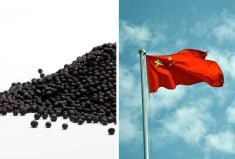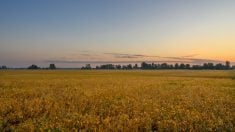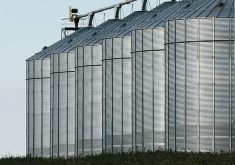Flushed toilets in Calgary could have dire consequences for someone downstream if bacteria, parasites and medicines are not cleared out during waste water treatment.
Monitoring stations are set up throughout the city looking for parasites such as giardia as well as things like caffeine from coffee drinkers’ urine. They check water, snow dumps and storm water catchment ponds and gather samples from the Glenmore Reservoir, which supplies the city’s drinking water.
“We are meeting all our regulatory guidelines, and we are confident we have sufficient treatment in our drinking water plants,” said Norma Ruecker of the City of Calgary’s water department.
Read Also

Canada and China discuss disputes over canola and EVs, says Ottawa
Senior Canadian and Chinese officials discussed bilateral trade disputes involving canola and electric vehicles on Friday, Ottawa said, but gave no indication of any immediate breakthrough.
Ten to 30 cases of giardia are reported in Alberta annually, and it can be a devastating gastrointestinal disease if it gets in the water supply, she told the Bow River Basin Council’s science forum held in Calgary April 15.
The city is also looking for cryptosporidium and a host of bacteria and viruses.
As well, it identifies the source and species of the contaminants, which can come from other people, pets, livestock, wildlife or agricultural runoff. For example, muskrats living upstream could pass on giardia.
Other monitoring programs assess the levels of nitrogen, phosphorus, ammonia, metals, PCBs, pesticides and other toxins.
Another area searches for pharmaceuticals, said Victoria Cooper of the Calgary water department’s water quality service.
Many water treatment systems were not designed to remove the residues from coffee drinking, birth control pills, pain medication and antidepressants. These might include codeine, ibuprofen or non-steroidal anti-inflammatory medications.
Testing for these drugs takes place in the city as well as 15 kilometres away on the Highwood River.
“It is very unlikely pharmaceuticals in drinking water will have an impact on your health,” she said.
However, it is known that estrodial in birth control pills can affect fish and may cause a population to be entirely female.
The department also checks prescription rates in the city so that it can correlate what it is looking for in the water supply at levels as small as one part per trillion.
Storm water gets additional attention. Up until about 10 years ago, it passed untreated into the city’s rivers and carried with it a range of contaminants that affected others east of Calgary.
Since 2005, monitoring systems have checked the amount of suspended solids, phosphorus concentrations and other potential contaminants, said Lily Ma, storm water management specialist with the city.
The city also wants to know how much might seep into the groundwater.
“This plan has been evolving over the years, and we understand the gaps in groundwater knowledge,” she said.
“We have plans to expanded this information.”
The city program is part of the South Saskatchewan Region’s surface water quality management framework developed under the land use framework released last year.
It includes a framework for the Bow, Milk, Oldman and South Saskatchewan rivers, which provide water to 85 percent of the people living in the region. It sets surface water quality triggers and limits for 15 indicators measured at nine monitoring stations on those rivers.
Water monitoring is a collaborative approach among municipalities, irrigation districts and Alberta Agriculture.
Environment Canada and Agriculture Canada also monitors locations at national parks and border crossings.
Contact barbara.duckworth@producer.com















